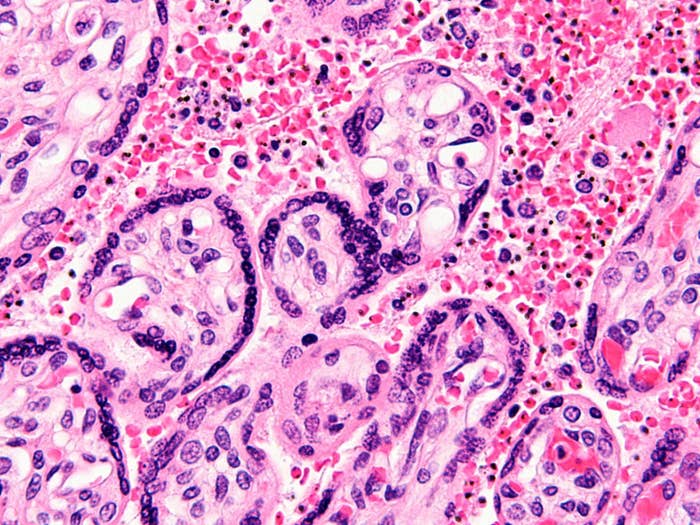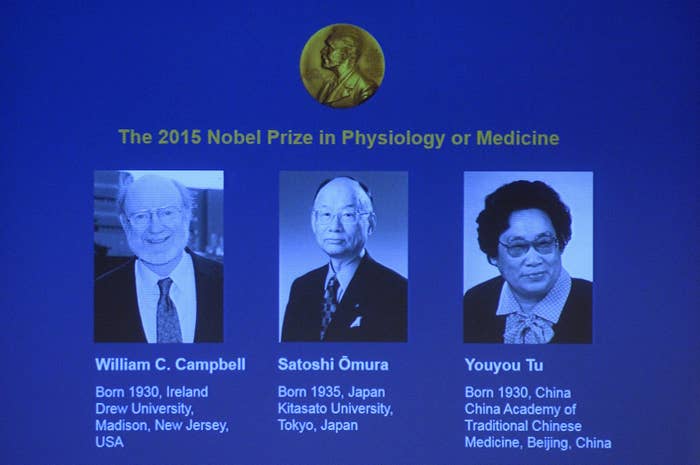
Three scientists who developed treatments against parasites have won the 2015 Nobel Prize in Physiology or Medicine.
Their discoveries "have provided humankind with powerful new means to combat these debilitating diseases that affect hundreds of millions of people annually. The consequences in terms of improved human health and reduced suffering are immeasurable," said the Swedish committee on Monday when announcing the award, which is worth about 8 million Swedish kronor (about $1 million) and will be split among the three recipients.
Half will go to William C. Campbell of Drew University in New Jersey and Satoshi Ōmura of Kitasato University in Japan, for the development of the drug avermectin, which treats river blindness, lymphatic filariasis, and other roundworm parasite infections.
The other half goes to Youyou Tu of the China Academy of Traditional Chinese Medicine, who discovered artemisinin, a drug against the malaria parasite that has saved many lives over the last decade.
About one-third of the world's population, particularly in sub-Saharan Africa and South Asia, are affected by parasitic worms. River blindness causes inflammation of the cornea, leading to blindness, and lymphatic filariasis, also known as elephantiasis, makes limbs swell and often leads to permanent disability. Avermectin treatment "is so successful that these diseases are on the verge of eradication, which would be a major feat in the medical history of humankind," the committee said.
Every year, more than 450,000 people, mostly children, die of malaria. The disease is caused by single-cell parasites and spread by mosquitos. Although parasites have developed resistance to artemisinin in many countries, when used in combination with other drugs it reduces malaria deaths by about 20%, the committee said. "For Africa alone, this means that more than 100,000 lives are saved each year."

In the 1970s, Ōmura, a microbiologist, screened thousands of soil samples for new strains of Streptomyces, a bacteria that was known to ward off other microbes. He identified 50 of those strains that seemed most promising, which Campbell, who was then working at the drug company Merck, tested in animals. Campbell discovered that one of them was an especially good parasite killer, thanks to an ingredient called avermectin. Later on, the researchers modified avermectin into a more powerful compound called ivermectin, which is now widely used.
In the late 1960s, the Chinese government launched a project to find treatments for malaria, and Tu became one of its scientific leaders. "During the first stage of our work, we investigated more than 2,000 Chinese herb preparations and identified 640 hits that had possible antimalarial activities," she wrote in 2011.
Tu discovered that an extract from the sweet wormwood (Artemisia annua) plant seemed to help treat malaria in animals, and later narrowed it down to one of the plant's compounds, artemisinin.
"During the Cultural Revolution, there were no practical ways to perform clinical trials of new drugs," Tu wrote. "So, in order to help patients with malaria, my colleagues and I bravely volunteered to be the first people to take the extract."

